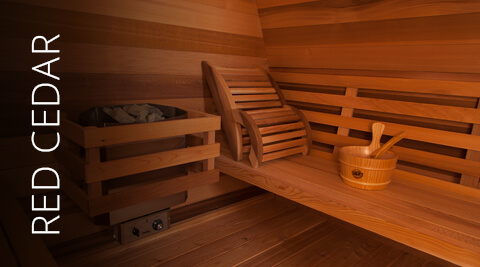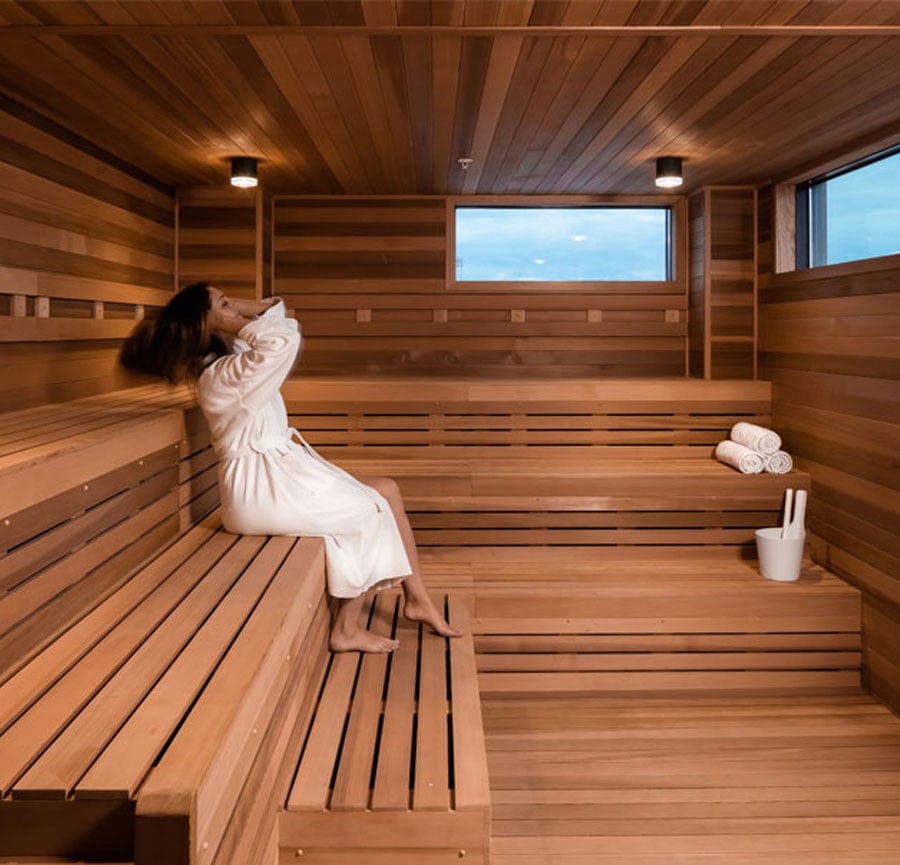See This Report about Traditional Sauna
See This Report about Traditional Sauna
Blog Article
Some Of Traditional Sauna
Table of ContentsFascination About Traditional SaunaGetting The Traditional Sauna To WorkTraditional Sauna - The FactsFascination About Traditional SaunaSee This Report about Traditional Sauna
Most of the weight shed in a sauna is water loss and is re-gained upon rehydrating. Nonetheless, undoubtedly sauna can be a fundamental part of a healthy and balanced weight-loss program. To consider the distinctions in between typical and IR saunas, I will separate these into proven, academic, and made distinctions.Hence, the best factor in the saunawhich is at the ceiling straight over the sauna heateris normally in between 185 and 190 F. Claims that a typical sauna exceeds 200 F is simply not real and not relevant for electric saunas offered in the US. The temperature for a far-infrared sauna is usually established in between 120 and 140 F; nonetheless, unlike the standard sauna, the objective in and IR area is not to attain a high temperature level.

When a conventional sauna has been effectively heated up, the sauna walls are cozy, the air temperature has actually accomplished set temperature level and the rocks are incredibly heated. As a fascinating side note, the heated walls and the rocks are emitting far-infrared warmth, combined with the heated air, to create an "covering heat".
Traditional Sauna - An Overview
When the high temperature is achieved, the components cycle on and off to maintain the high temperature level. Many traditional sauna customers take pleasure in pouring water over the rocks to develop heavy steam to raise sauna moisture levels. The advantages of pouring water over the rocks include: making the room more comfy, dampening the nasal flows, and allowing the usage of aromatherapy by mixing important oils with the water.

When the power enters the body, it triggers the body temperature to enhance and eventually causes sweating. In an infrared sauna it is very important for the emitters/heaters to stay on practically constantly. Because there is no mass of rocks to preserve heat, the sauna will cool down if the emitters closed off.
Traditional Sauna Can Be Fun For Everyone
As pointed out over, the sauna bather in an infrared space wishes to position himself in front of running emitters to get maximum take advantage of the heat. The heating time for the two areas can be very different, depending upon exactly how the rooms are made use of. For a standard sauna, a bather ought to enable 30-40 minutes for the room to accomplish a preferred temperature level and to correctly pre-heat the rocks.

A well built sauna will usually attain a temperature level of 150-160 F in about 30-40 mins (Traditional Sauna). For hotter temperature levels, the area might require to warm for a longer period. As soon as the room attains set temperature, the heating unit will cycle on and off, typically running regarding 50% of the time. The protected walls and the warmed rocks will maintain the room warm and at secure temperature levels.
To some, 15 mins was "wasted" while the infrared energy warmed the timber panels instead of warming a body, while others locate a pre-heated area to be much more comfy and think an elevated starting temperature level is needed to begin sweating. The size of suggested use for every room useful reference is around the same (10-15 minutes per session); however, because of the reduced air temperatures and the ability to feel the effects of infrared warm faster than a standard sauna, it is not uncommon for an individual to invest a total of 20-30 minutes in an infrared sauna.
The Definitive Guide for Traditional Sauna

The ordinary price per kWH of electrical power in the U.S. is around $0.11, so a 4.5 kW heater will cost approximately $.50 to run for one hour, if the heating unit runs continually for one hour. Generally a sauna heating system will compete 75% of the first hour and 50% of subsequent hours on since the components cycle once the established temperature level is achieved.
A two person far-infrared space is typically physically smaller sized than a traditional sauna, frequently concerning 4' x 4' or smaller sized. The IR heater is commonly 1.5-1.7 kW utilizing a 120 review volt 15 amp plug-in solution. Since the space can be utilized sooner than a sauna space, we will certainly presume the room is utilized for to of an hour consisting of heat up time.
Lastly, there is a hardly ever gone over difference in the social experience in between both areas. While our society has actually shed several of the social benefit of the traditional sauna experience, it can be extremely socially gratifying (Traditional Sauna). From household time in the sauna, to heart-felt discussions with loved ones, to sauna partiesthe typical sauna experience can lead to intimate mingling
The Single Strategy To Use For Traditional Sauna
The majority of greater end infrared areas consist of colored light treatment, sound systems and full-glass fronts.
Report this page